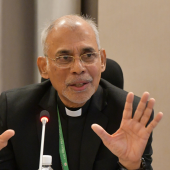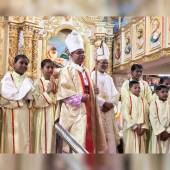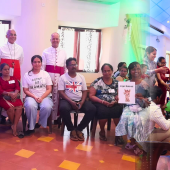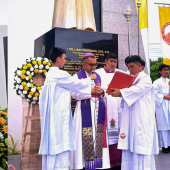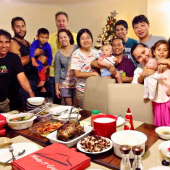India: Mary Roy, who ensured equal rights in family property for women, dies at 89
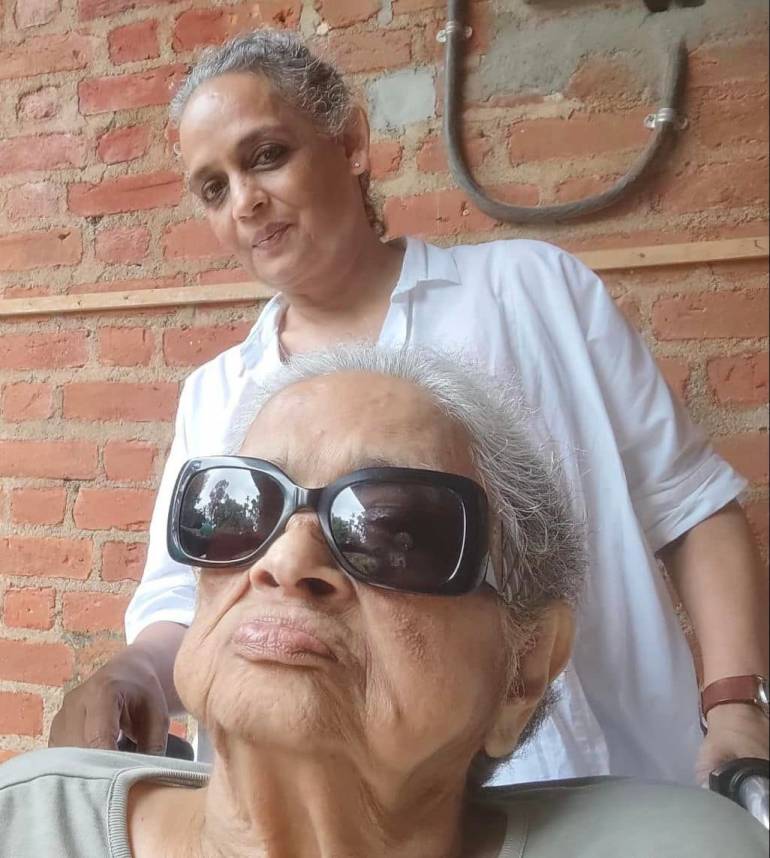
Mary Roy, an educator and a women’s rights activist, the mother of author Arundhati Roy, was known for winning a landmark Supreme Court case in 1986 that ensured equal rights in the family property for women belonging to the Syrian Christian community in Kerala, south India.
Mary passed away after a brief illness in Kottayam, a town in the southern Indian state of Kerala on September 1. She was 89.
She is survived by her son, and her daughter, the writer Arundhati Roy.
In tribute, Bangalore-based Ammu Joseph writes: “RIP. I remember interviewing Mary Roy many years ago. A remarkable woman. She was instrumental in securing inheritance rights for Syrian Christian women (even if patriarchy has managed to work its way around the law). “Pallikudam” (school), which she founded and headed, was considered an exceptional educational institution.
Of course, Arundhati Roy is her internationally acclaimed daughter, but obituaries with headlines describing her as Arundhati's mother are a bit off the mark, in my opinion (although I understand the motivation).
The noted Supreme Court lawyer, Rebecca Mammen John, in her post said: that Mary Roy was a single mother of two children who had walked away from an unhappy marriage and then proceeded to fight one of India’s landmark cases for women’s rights.
The law is most oppressive where succession rights are concerned and tends to protect the rights of sons over those of daughters in matters related to property. Till the Indian Supreme Court’s order passed in 1986 in a case titled Mary Roy & Ors. V. State of Kerala & Ors, Christian women from the erstwhile Travancore state were governed by the oppressive Travancore Christian Succession Act of 1916 where a woman was entitled to 1/4th of her brother’s share in the property or Indian rupees 5,000 whichever was less when her father died intestate.
Mary Roy will be remembered for her extraordinary courage and perseverance to set this historic wrong right.
This judgment is of great significance as it gave Christian women in the state of Kerala equal inheritance rights. It is the first step towards gender equality.
While she was denied her share of family property and her case made its way through Indian courts, she also set up a progressive school called Corpus Christi, later renamed "Pallikoodam" (school) in Kottayam Kerala, in an environmentally friendly building designed by the legendary architect Laurie Baker. The school continues to champion environmental causes and emphasizes students' learning their mother tongue - Malayalam.
In an old article in The Mint Lounge, Gita Aravamudam wrote: Although Mary Roy is best known for her heroic fight for inheritance rights for women, to me she is much more. She is the staunch upholder of women’s rights who wrote to me on a letterhead that had a cave woman dragging a man by his hair and whose tough exterior hid a sparkling sense of humor. She understood the links between traditions and customs entrenched in patriarchal laws that discriminated against women and helped survivors get back on their feet.
It was my dear friend the advocate Meera Shankaranarayan who told me in 1985 about Mary Roy’s brave and lonely battle against the Travancore Christian Succession Act. Meera had known Mary for several years and helped her prepare a brief for Delhi lawyers when she decided to take her appeal to the Supreme Court.
Meera told me, "You should write about her. She needs all the support she can get. Even the women in her community, the ones who are denied an equal share in their family property because the archaic Act is still followed, shy away from her."
My curiosity was whetted. I set off to meet Mary Roy in Kottayam, a town that’s home to a large Syrian Christian population, on the edge of the town, on a hillock, stood the Corpus Christi school, which she built and ran. Though Mary was well-known in Kottayam, thanks to her school, she was not yet a public figure then. Very few outside the Syrian Christian community knew about her. And, yes, no one had even heard of her daughter, Arundhati.
My first encounter with her was riveting. I was bowled over by her confidence and her unwavering dedication to the cause she had taken up. My ensuing article in Illustrated Weekly was the very first one to be published on her in the national media. Her case was still in the initial stages. At the Supreme Court, noted advocate Kapila Hingorani helped her file and have it heard as a public interest litigation (PIL) case.
Mary Roy told me she had become aware of the little talked about Travancore Christian Succession Act of 1916 only after her father died without a will, and her brother denied her a share of his property.
According to this archaic Act, which applied to Christians residing in the erstwhile Travancore State, a daughter was entitled to only a quarter of the share of a son in family property, or Indian rupees 5,000, whichever was less.
Mary had had a tumultuous life. Her father, P.V. Isaac, was from a well-to-do Syrian Christian family and was an entomologist who had trained in England and been an Imperial Entomologist at Pusa in Bihar state.
Her mother, who also came from an old and wealthy Syrian Christian family, had brought a substantial dowry in 1927.
These female artisans sew together a brand and their futures.
Mary had a cosmopolitan education, and it was in Calcutta that she met and married a Bengali. Since she married against her father’s wishes and outside of the Syrian Christian community, she was not given any dowry or "share," as it was euphemistically termed in her community.
Mary Roy, the staunch upholder of women’s rights, wrote to me on a letterhead that had a cave woman dragging a man by his hair.
When her marriage broke down, Mary returned with her two small children to join her mother in their house in Ooty. Her mother had also walked out of her violent marriage and was living by herself. Mary started teaching to support herself and her children.
It was when her father passed away that the problem of succession cropped up. One of her brothers wanted to sell the Ooty house because he needed the money. When Mary objected, saying she had a share in it, he quoted the Travancore Christian Succession Act of 1916.
Mary was shocked. "Can you imagine the value of a female being fixed at a quarter of that of a male?"
She said. "And her maximum worth is Indian rupees 5,000! What greater blow can there be to human dignity," she exclaimed to me.
She appealed to the Madras High Court, which ruled in her favor. Since the Ooty property was in Tamil Nadu, it came under the jurisdiction of the Indian Christian Succession Act, 1925, which said all the children and the widow were eligible for equal shares in the property. As a gesture of goodwill, her mother and siblings handed over their shares in the Ooty property to her. Her mother had left Ooty.
A few years later, Mary decided to leave Ooty and return to her hometown of Kottayam to start school.
Then it hit her again. In Kerala, where the Travancore Christian Succession Act was still par for the course, she had no right to an equal share in the vast property owned by her family. Her sister, who had been married off with a large dowry, did not come to her support. Neither did her mother. And her brother stood his ground. This time, she took her battle to the Supreme Court.
Most of the women in her community had not heard of the archaic act. But more importantly, even when they learned of it, they were afraid to challenge the status quo. Mary told me that though the women in her community were well-educated and held jobs, they had been "brainwashed by the men" to believe that if they did not accept dowry, instead of an equal share in the family property, they would erode the very foundations of the Syrian Christian economy and community.
Mary was not a quitter. She took bank loans and started her school with just half a dozen students.
Within a few years, the affluent Syrian Christian community, which had boycotted her for her stance, started sending their children to her school, and even her brother’s children were her students. She no longer needed anyone’s support.
She joked, "My dear, I am now a pillar of the community. I hear it is being said in Kottayam that if you want to belong to the right circles, you should have a child in Mary Roy’s school or you should have had a divorce. "
On one of the many occasions I visited Mary, I met her daughter Arundhati, whom she affectionately called "Suzie. Arundhati Roy was then a sparkly, young student at the Delhi School of Architecture. Mary would tell me how she had set her brilliant daughter free to live her own life the way she wanted to, either as a student or as a wanderer on the beaches of Goa or in a barsati in Delhi.
Mary soon had me hooked on her other campaigns. She was trying to identify Syrian Christian women who had suffered because of this Act. At one of her meetings in Trivandrum, I met several women who had tragic stories to share. It was there that I first met advocate Indira Jaisingh, who had also gotten involved in the case.
One of the women I met was Mary Abraham, the widow of a former sessions judge. She was evicted by her brother-in-law from the home she and her husband had lovingly built on his ancestral property.
Because they were childless, when her husband died intestate, his brother inherited the property and threw her out. Abraham, a retired assistant professor of chemistry, lived in an old age home.
I also met the beautiful and spirited Dr. Lily Murikkan, the only daughter of a wealthy family, who did not get her "share" since she never married. Her brothers, who had appropriated all the property, left her practically on the streets. Widows, especially those with no children, divorcees, and unmarried women have been worst affected by the Act.
Dowry, also known as "streedhanam" or "share", played a very big part in Syrian Christian marriages. One of the papers filed along with Mary’s writ petition was an extract from the Sunday Malayalam Manorama matrimonial page. Each ad on the page specified the "share" of the bride-to-be, carefully avoiding the D word that would make it illegal. She followed up on cases of dowry harassment, abandonment, and murder for dowry. In many cases, she helped the survivors.
In 1986, three years after her writ was filed, Mary tasted victory. The Supreme Court held that the Travancore Christian Succession Act stood repealed with retrospective effect from 1951, the year it should have been replaced by the Indian Succession Act. There was consternation in the community. What were the implications of the retrospective effect? Would there be a deluge of demands from daughters who had taken their "share" and wanted a portion of the property as well?
Each ad on the page specified the "share" of the bride-to-be, carefully avoiding the D word, which would make it illegal.
I met Mary soon after this landmark victory. She was jubilant even though she knew there was a long fight left. "The problems are innumerable. I am really in no position to comment," she said. "At the moment, all I have to say is thank God I am no longer worth 5000! With the rapid fall of the rupee value, my shame was increasing every day!"
It took another 25 years for her to get a final verdict, executing the Supreme Court decree. Her brothers filed a slew of cases, as did many others who feared their properties would be affected.
In 2010, a final decree was given by a Kottayam sub-court, and finally, Mary, her sister, and her widowed sister-in-law got their rightful share of the family property.
Though she finally got just nine cents of land (about 4,000 sq. ft.), Mary said she had no regrets because she’d fought this for the principle of equality. She had won a victory, not for herself but for all the women in her community.
I have lost touch with my old friend Mary Roy, who, at the age of 87, still presides over her school, now renamed Pallikoodam, although she is not involved in its day-to-day running. Her students, past and present, whom I often run into, always talk about the wonderful values she instilled in them. – John Dayal, a senior journalist and human rights activist
Radio Veritas Asia (RVA), a media platform of the Catholic Church, aims to share Christ. RVA started in 1969 as a continental Catholic radio station to serve Asian countries in their respective local language, thus earning the tag “the Voice of Asian Christianity.” Responding to the emerging context, RVA embraced media platforms to connect with the global Asian audience via its 21 language websites and various social media platforms.









